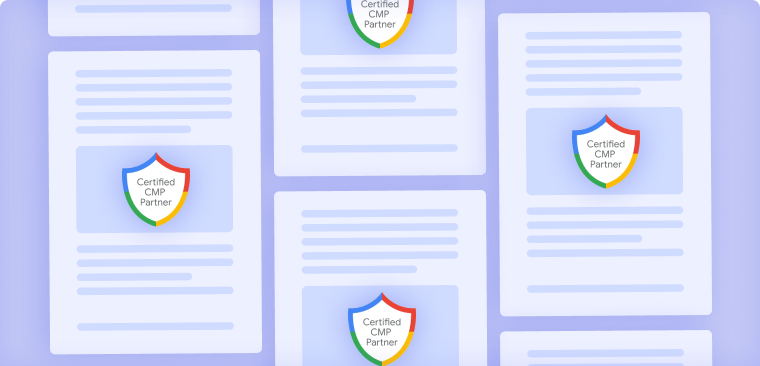Why Your IP Address Could Be Personal Data (And What That Means for GDPR Compliance)
June 13, 2025
•
7 min read
Table of contents
back
to the top
Why Your IP Address Could Be Personal Data (And What That Means for GDPR Compliance)
If your website collects IP addresses, you might be handling personal data and that means GDPR applies. Many businesses overlook this simple fact, but regulators have made it clear: under the GDPR, IP addresses can be considered personal data. And that has big implications for how you collect, store, and use them.
In this post, we’ll break down when and why an IP address is considered personal data, what the GDPR expects from you, and how to stay compliant while maintaining trust with your users.

When Is an IP Address Considered Personal Data?
It comes down to one thing: identifiability. The GDPR defines personal data as any information that can be used, directly or indirectly to identify a person. That includes names and email addresses, sure. But it also includes less obvious identifiers, like cookie IDs or IP addresses.
And yes, IP addresses can often be traced back to a specific individual or household, especially when combined with other data. That’s why the Court of Justice of the EU (CJEU) ruled in the Breyer v. Germany case that dynamic IP addresses are personal data when a website operator has the legal means to link the address to a specific user.
So, if you or a third party (like an analytics provider or ad network) can reasonably identify someone via their IP, GDPR rules apply.
Common Violations Involving IP Addresses
Let’s look at where websites typically go wrong:
1. Collecting IPs Without Legal Basis
If your site logs IP addresses for analytics, marketing, security, or anything else, you need a lawful basis to do so. That could be legitimate interest, consent, or a contractual necessity, but it must be clearly defined. Simply logging them “just in case” is not enough.
2. Failing to Inform Users
Even if you’re collecting IP addresses for a legitimate reason (e.g., fraud prevention), you still need to tell users what data you collect and why. If your privacy policy doesn’t mention IP addresses or explain your data retention policies, that’s a red flag.
3. Using IPs for Tracking Without Consent
Using IP addresses for analytics or targeted advertising often requires consent — especially if it’s shared with third parties. Many analytics tools or ad tech services rely on IPs to fingerprint users. Under the GDPR, this counts as personal data processing, and you must obtain explicit, informed consent before doing it.
What You Should Do About It
1. Review Your Data Flows
Start by mapping out exactly how and where IP addresses are collected on your site. Are they stored in server logs? Passed to third-party services? Used in analytics dashboards? Understanding your data flow is step one.
2. Update Your Privacy Policy
Be transparent. Your privacy notice should include information about:
- The collection of IP addresses
- The purpose (e.g., security, analytics)
- The legal basis for processing
- How long the data is retained
- Whether it’s shared with third parties
3. Get Proper Consent (If Needed)
If you use IP addresses for anything beyond essential services like behavior tracking or marketing, you likely need user consent. This should be gathered through a GDPR-compliant consent mechanism, ideally one that lets users accept or reject specific types of tracking.
4. Anonymize Where Possible
When full IP addresses aren’t essential, consider anonymizing or truncating them. Many analytics platforms now offer this option (e.g., Google Analytics with IP anonymization enabled). This can reduce your compliance burden — but be aware that even truncated IPs may still be personal data depending on context.
How CookiePal.io Helps
CookiePal.io isn’t just for cookies — it can help manage all types of personal data collection, including IP addresses:
- Custom Consent Flows - Ask users for consent before collecting identifiable data like IPs
- Privacy Notices - Easily update and display clear, GDPR-compliant policies
- Granular Control - Let users opt in to only the services they’re comfortable with
- Audit Trails - Keep secure records of when and how users gave consent
The Bottom Line
IP addresses might seem like harmless tech details — but under the GDPR, they’re often personal data. That means they’re subject to all the same rules as names or email addresses. Ignoring that could lead to compliance risks, fines, and lost user trust.
By being transparent, limiting what you collect, and respecting user choices, you can turn privacy into a competitive advantage.
Sources
Explore further

Why Do You Need a GDPR-Compliant Cookie Banner?
Learn why having a GDPR compliant cookie banner is essential for your website. Learn how it builds trust and ensures legal compliance.
July 26, 2024
2 min

The Role of Data Protection Officers (DPOs) in GDPR Compliance
In today’s digital landscape, protecting personal data has become a vital concern for organisations.
September 16, 2024
4 min

CMP Myths Busted, Part 1: “All You Need Is a Cookie Banner”
A cookie banner alone isn’t GDPR compliance. This article exposes the myth and explains why only a full CMP can offer real consent control, geo-targeting, and audit-ready logs.
December 12, 2025
3 min


